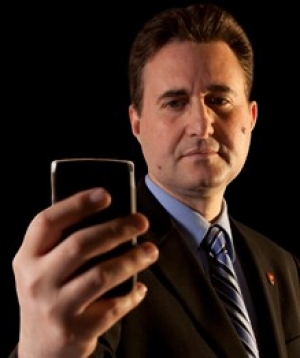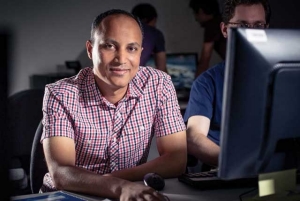Students agreed. With few other institutions offering graduate programs in information and systems engineering, enrolment in CIISE’s PhD, two masters and two graduate-certificate programs was up to full capacity at 100 entrants per year a few cycles after its founding.
Eleven years later, the 19 full-time faculty — computer scientists and electrical and mechanical engineers — work in three primary research areas. One of them, the Computer Security Laboratory (CSL), is home to six professors and more than 60 graduate students.
This makes the CSL the country’s largest concentration of information systems security researchers. Rachida Dssouli, a professor and CIISE’s founding and current director, says it also has “the highest impact in terms of reputation, research grants attracted, industrial collaborations and publications” of any comparable lab in Canada. “It constitutes not only a signature area for the university but helped put Concordia on the world map.
 Professor Mourad Debbabi has been with the Concordia Institute for Information Systems Engineering since its founding in 2002.
Professor Mourad Debbabi has been with the Concordia Institute for Information Systems Engineering since its founding in 2002.
 Mohammad Mannan in Concordia’s computer security laboratory. The assistant professor conducts research on authentication and passwords.
Mohammad Mannan in Concordia’s computer security laboratory. The assistant professor conducts research on authentication and passwords.